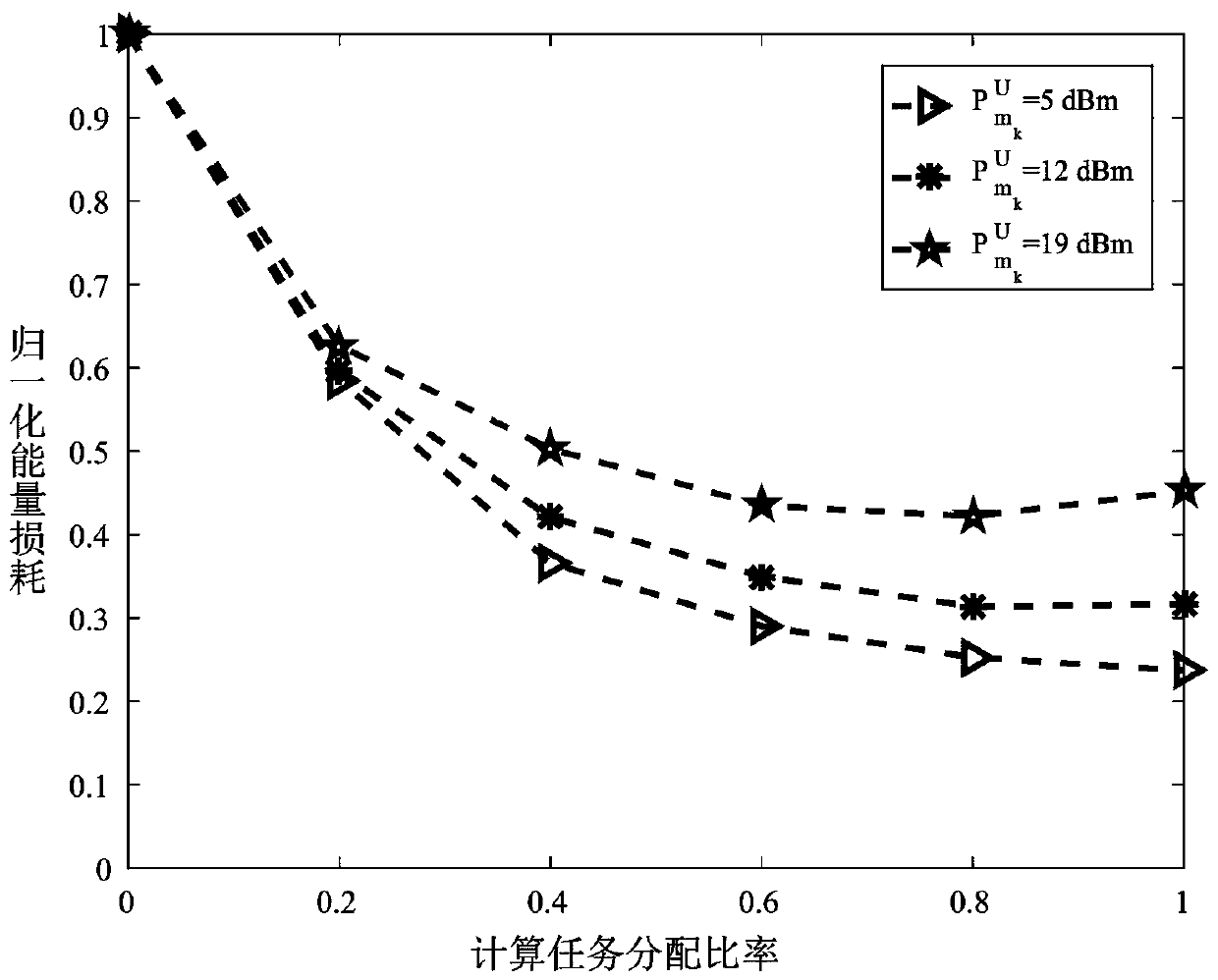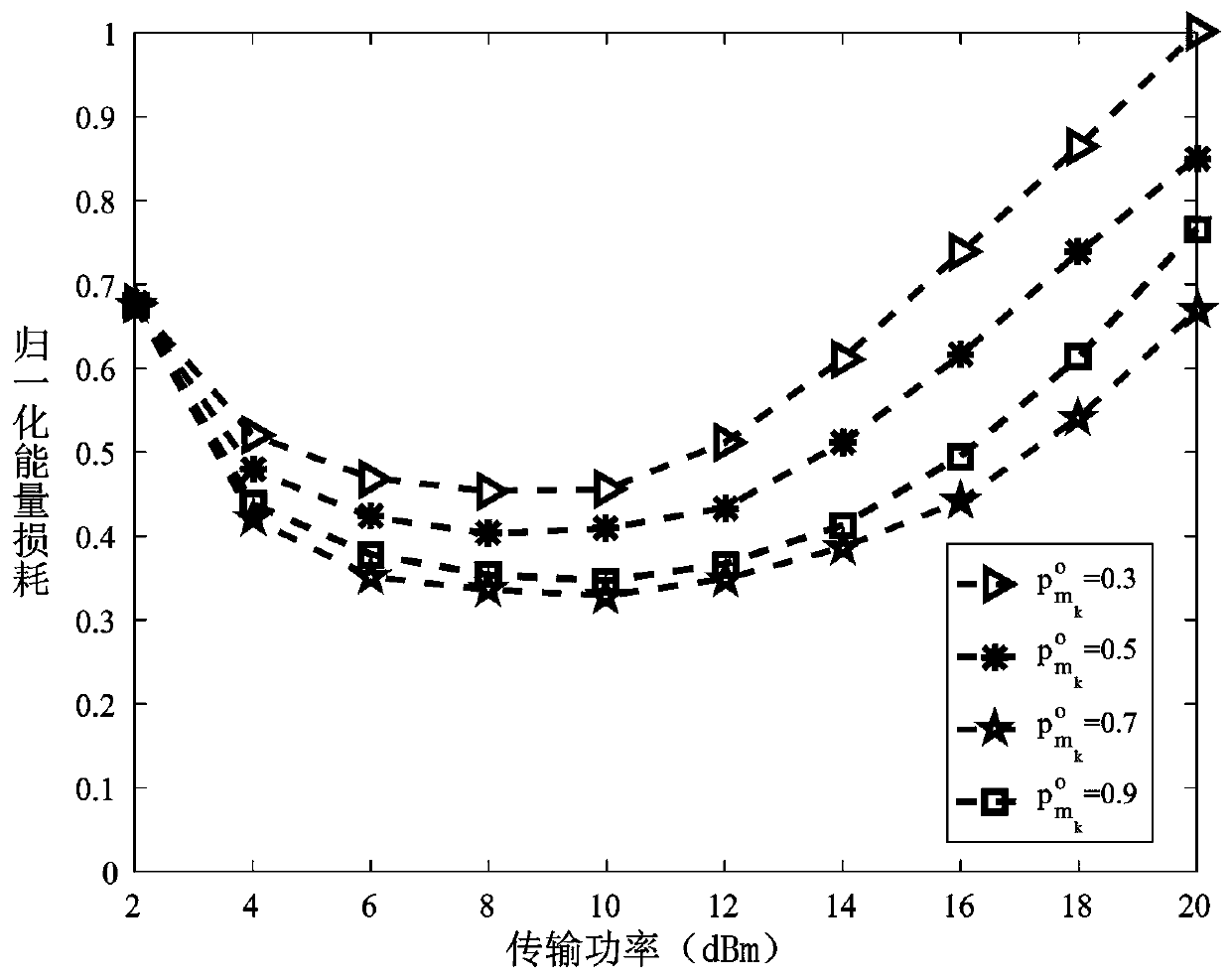ADMM-based task allocation and power control scheme in Internet of Vehicles
A technology of car networking and distribution ratio, applied in the field of wireless communication, to achieve high energy efficiency
- Summary
- Abstract
- Description
- Claims
- Application Information
AI Technical Summary
Problems solved by technology
Method used
Image
Examples
Embodiment 1
[0019] The present invention simulates the scene of multi-task and multi-server in the scene of the Internet of Vehicles. Considering the fast moving speed of the vehicle, the task to be calculated may not be transmitted within the service range of a roadside unit, and there will be cross-area when receiving the calculation result question. By judging whether tasks can be assigned to roadside units for calculation, and coordinating the ratio of task allocation and transmission power, the energy consumption of user equipment can be reduced under the condition of ensuring the delay requirement. Through the control of the central controller, determine the roadside unit to which the vehicle is located, and complete the return of the calculation results. At the same time, it is necessary to take into account the waiting time caused by the multitasking of multiple users and the limited computing power and storage capacity of the roadside unit. Its system model diagram is as follows...
Embodiment 2
[0043] The optimization algorithm of the present invention is divided into two iterative processes, the outer iterative process solves the nonlinear fractional optimization problem, and the inner iterative process updates variables. Its goal is to minimize the roadside unit service area The overall energy consumption of the vehicle. The problem is expressed as:
[0044]
[0045] s.t.
[0046]
[0047]
[0048]
[0049]
[0050]
[0051] Due to different user devices The task assignment variables of are coupled, so the optimization objectives are not separable. To solve this problem, a local copy of the optimal resource allocation policy is introduced and local optimization variables are defined such that the objective function is separable:
[0052]
[0053] s.t.
[0054]
[0055]
[0056]
[0057]
[0058]
[0059] Therefore the objective function can be decomposed into A subproblem that can be solved in parallel, the problem...
PUM
 Login to View More
Login to View More Abstract
Description
Claims
Application Information
 Login to View More
Login to View More - R&D
- Intellectual Property
- Life Sciences
- Materials
- Tech Scout
- Unparalleled Data Quality
- Higher Quality Content
- 60% Fewer Hallucinations
Browse by: Latest US Patents, China's latest patents, Technical Efficacy Thesaurus, Application Domain, Technology Topic, Popular Technical Reports.
© 2025 PatSnap. All rights reserved.Legal|Privacy policy|Modern Slavery Act Transparency Statement|Sitemap|About US| Contact US: help@patsnap.com



